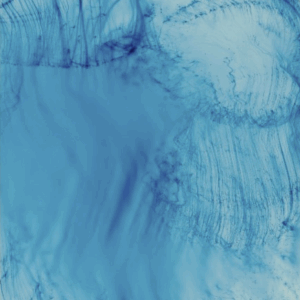JTF (just the facts): A total of 74 black and white photographs, framed in black and matted, and hung against white and blue walls in a divided space on the museum’s main floor. The images were taken between 1932 and 1950, and are shown here in a mix of vintage prints and later prints made between 1946 and 1984.
The show also includes 2 video page throughs of the French and American versions of the book, a wall installation of 8 books open to various spreads, and a 1959 film (1 minute 40 seconds) made by Gjon Mili of Cartier-Bresson photographing Chinese New Year in New York. 3 vitrines are interspersed in the galleries, containing original letters, notes, contracts, magazine spreads, book reviews, and other ephemera. The exhibit was organized by the Fondation Henri Cartier-Bresson. (Installation shots below.)
A facsimile re-publication of the original book was released by Steidl in 2014 (here).
Comments/Context: At first thought, the idea of making an exhibit about a famous and influential photobook like Henri Cartier-Bresson’s The Decisive Moment seems straightforward enough. To the uninitiated, a photobook is merely a gathering of photographs in book form, and so to create an exhibit of a particular photobook, we should simply unpack all the photographs that were included in the original book and display them as prints (hopefully vintage) on the walls of a gallery space. And this is largely what has occurred in this exhibit at the ICP.
But this approach fundamentally undervalues, and in a sense actively dismisses, the whole process of book making and the carefully integrated aspects of design and production that go along with the images. It seems to be saying that the pictures are all that matter, and that the book itself was simply a convenient delivery vehicle, which can be bluntly stripped away without losing anything important. But to those who follow photobooks closely, nothing could be further from the truth – a photobook is a stand alone artistic statement, and should be treated as such. So in this age of exciting photobook innovation and experimentation, it is surprising that an in-depth museum-worthy study of a ground-breaking photobook like The Decisive Moment would be so backward looking in its conception, but unfortunately, this one is.
This isn’t to say that Cartier-Bresson’s prints from the project aren’t worth seeing – they absolutely are. Of the 126 images that originally appeared in the first edition of The Decisive Moment (or Images à la Sauvette as it was titled in the first French edition), 74 are on view here, spanning roughly two decades of the photographer’s work, in locations from India, Pakistan, Singapore, and China to Spain, Mexico, France, Germany, and the United States, among other far flung locales. The prints are arranged in roughly chronological order, which naturally falls into geographic groupings that generally follow Cartier-Bresson’s various trips and journeys.
The reason The Decisive Moment was (and remains) so important in the history of the medium is that it gave voice to a more personal approach to documentary photography. If we can try to put ourselves back into the photographic mindset of 1952 (when the first edition was published), Cartier-Bresson’s aesthetic thinking seems downright radical. To him, making a photograph wasn’t just documenting what was in front of the camera or capturing the news as it was happening. It was an internal process that integrated attention to the action in the world around him with his particular eye behind the lens, the individual compositions coming together in that one magical instant when the forms in motion coalesced into something beyond the obvious. For many, this deliberately ready-for-the-unexpected approach felt like a new brand of photojournalism, where visual storytelling moved into the realm of art.
As evidenced by the subset of pictures on view from the photobook in this exhibit, Cartier-Bresson was astonishingly consistent in applying these principles, and the parade of iconic images and greatest hits here is proof positive of how his aesthetic thinking was translated into memorable photographs again and again. His 1932 image of the silhouetted man jumping over the water behind the Gare St. Lazare in Paris is perhaps the most recognized example of the decisive moment in thrilling action, but there are plenty of other examples included in the book where the momentary arrangement of people and their surroundings (especially using shadows, see-through planes, and foreground/background contrasts) achieve a kind of elegant clarity that transforms the mundane into the magnificent.
But by simply providing a selection of images from the photobook (and not even the full complement of every picture included in the first edition), the exhibit misses a major opportunity to unpack the genius of the photobook further. While a few letters and other ephemera provide part of the backstory, and two videos provide page by page flip throughs, many questions remain tantalizingly unanswered or unaddressed. Where are the maquettes and mockups for the various versions? Where is the timeline or chronology of the intermediate design and production steps? How did the sequencing come together? Are there contact sheets (like the ones used so persuasively in the Looking In exhibit of Robert Frank’s The Americans) that can give us insight into Cartier-Bresson’s choices or edits? Why did Cartier-Bresson arrange some images as full spreads, some as side by side pairings, and others as groups of three or even four images? Cartier-Bresson was famous for his elaborate and comprehensive text captions, and yet The Decisive Moment has none – how did he come to that design decision? The book itself is physically huge, particularly so in relation to other books from the 1950s – why did he choose that format? What about the collaboration with Matisse on the cover – what is the backstory to that relationship, and are their alternate versions or designs that were tried out? I wish the exhibit had devoted a portion of its space to these and other details, as they feel like glaring omissions in the history of this crucial photobook.
But in this case, a critic like myself needs to review the exhibit that is on view, not the mythical one I had hoped to see. And as organized, this show offers a solid selection of superlative works by Cartier-Bresson, and makes a convincing visual case for the importance of his thinking in The Decisive Moment. Measured by the photographs alone, the show is a standout, but if we imagine the whole rich story of this critical photobook that could have been told, the many missing pieces frustrate our ability to celebrate it in the manner it so rightfully deserves.
Collector’s POV: Since this is a museum show, there are of course no posted prices. Cartier-Bresson’s prints are ubiquitous at auction, with dozens of prints available each and every season. Prices have ranged from roughly $1000 to $215000 in recent years, with obscure images and later prints at the bottom end of that range and vintage prints of the iconic images at the top.









































